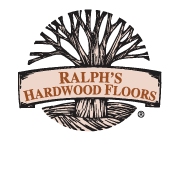All hardwood floors have grades—names used to explain the amount of color variation visible in hardwood planks. The grades also enable us to categorize hardwood floors according to other character marks, like knots, mineral streaks, and worm holes.
In essence, each grade has its own distinct character traits and unique visual appearance.
Most manufacturers have their own set of grades. However, they are usually variations of the categorization laid out by the National Oak Flooring Manufacturers Association (NOFMA). This classification enables us to have consistency with hardwood flooring grades across the U.S. They are also supported by the National Wood Flooring Association (NWFA).
The Four Standard Grades of Hardwood Floors
The NOFMA has laid out four distinct grades of hardwood floors. They are not a top-to-bottom list; Grade 1 is no better than Grade 2. It’s just a way to describe a look so you can choose what you want.
Grade 1
Grade 1 has few variations, making it very uniform in its color and appearance. You will rarely find any knots or burls on this type of hardwood.
Grade 1 boards are usually obtained from the heartwood of a tree, which is then turned into smooth floorboards, ideal for people who want clear, classic-looking hardwood flooring.
Lumber used for this type of hardwood flooring is rare to find, which is why many manufacturers use engineered Grade 1 hardwood.
Grade 2
This grade has some mild moderations to its natural look. It is a fairly consistent look with a few desirable imperfections.
Grade 2 hardwood is obtained from heartwood like Grade 1, but also from sapwood, which enables more color variations and subtle changes in the grain pattern.
Grade 3
Grade 3 floors have very noticeable color variations and prominent character traits like knots, worm holes, and open checks. What’s more, it usually has accompanying machining and drying variations as well. It’s essentially perfect for those seeking a more relaxed feel and a natural, organic hardwood floor look.
As you can probably assume, Grade 3 floors are centerpieces in any room because of their rustic look. They are also highly durable, as most damage fits into the rugged look that's accentuated by knots and scratches.
Grade 4
The last grade is the most rustic one among the four grades of hardwood flooring. It’s in many ways similar to Grade 3, but it has more natural wood marks and broader color variations from board to board.
Many also call it the Rustic Grade, which is entirely fitting for the overall appearance. If you're looking for the most natural hardwood look, then this grade is the ideal choice.
Take a look at our showroom to decide which grade best suits your vison for your home.















